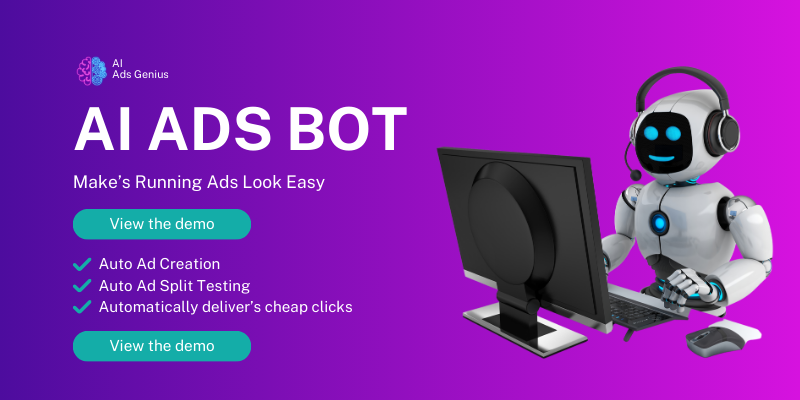Understanding Retargeting Ads
What Are Retargeting Ads?
Let’s kick things off by understanding what retargeting ads actually are. These are those little reminders you see from websites you’ve recently visited—like an old friend popping up to say hi again. They’re designed to keep your brand top of mind as users scroll through their feed.
Retargeting ads work by using cookies to track visitors to your site. When someone leaves your site without converting, these ads follow them around on Facebook and other platforms, encouraging them to return and, hopefully, make that purchase.
The power of retargeting lies in its ability to reconnect with potential customers who have expressed interest. It’s like saying, “Hey, remember us? We’re still here!” But, there’s often a fine line between gentle reminders and just plain overkill.
Setting Frequency Caps
Why Set Frequency Caps?
Ah, frequency caps—these are your best friends in ensuring that your ads don’t become pests. Think of it this way: if you’re seeing the same ad over and over, you’re likely to get annoyed! You want to strike a balance between keeping your brand present and overwhelming your audience.
Using frequency caps helps you control the number of times your ads appear to a single user. If someone sees your ad too often, the effectiveness can drop significantly, turning potential customers away instead of enticing them.
Plus, setting a frequency cap can help you manage your budget more effectively. If your ads are showing too frequently, you might be spending more than you need to without seeing the best returns on your investment.
Adjusting Your Audience Settings
Refining Your Target Audience
One effective way to limit ad frequency is to refine your audience settings. Trust me, it’s worth taking the time to really understand who your ideal customer is. You can use insights from Facebook’s analytics to get a clearer picture.
For example, instead of blanket targeting everyone who visited your site, you can create segments. You could target users who checked out specific products or those who abandoned their cart. This way, you’re speaking to people who have shown interest, without bombarding them with the same ads.
By tailoring your audience, you can ensure that your ads have a more meaningful impact, increasing the chances of conversions without annoying the audience. Everyone wins, right?
Utilizing A/B Testing
What is A/B Testing?
A/B testing is like having a petri dish for your ad strategy. You can test multiple versions of your ads to see which ones resonate best with your audience. It’s crucial for figuring out the right mix that keeps your audience engaged without shoving ads down their throats!
In your A/B tests, consider varying ad formats, creatives, and messages. Monitor which ads perform better with your audience and choose the winning variations to use more frequently. This approach not only helps with frequency but also maximizes your overall effectiveness.
It’s a bit like a science experiment: some ads will definitely bomb, but others will go off without a hitch. The key is to keep experimenting until you find that sweet spot where your audience feels engaged instead of overwhelmed.
Regularly Analyzing Performance
Why Analyze Performance?
Finally, I can’t stress enough the importance of regularly analyzing your ad performance. If you aren’t checking in on how your ads are doing, it’s like sailing a ship without a compass—you’re just drifting aimlessly!
Facebook provides a wealth of analytics that can give you insights into your ad frequency, reach, and conversion rates. Use this data to inform your strategy and make adjustments as needed. If certain ads are underperforming due to being too frequent, don’t hesitate to tweak your approach.
Ultimately, your goal is to create a seamless experience for your audience while still achieving your marketing objectives. Keep those analytics close at hand, and you’ll be able to navigate the tricky waters of retargeting like a pro.
FAQ
What are retargeting ads?
Retargeting ads are advertisements that follow users after they have visited your website, aiming to bring them back for a conversion. They serve as reminders of the products or services a user has previously shown interest in.
How can I set frequency caps on my ads?
You can set frequency caps in the ad set settings on Facebook Ads Manager. Look for the “Ad Delivery” section, where you’ll find options to limit how many times your ads are shown to the same person within a specific time frame.
Why is it important to refine my target audience?
Refining your target audience helps you ensure that your ads reach the right people at the right time. This makes your advertising efforts more effective, reducing ad fatigue and increasing the chances of conversions.
How does A/B testing help in limiting frequency?
A/B testing allows you to identify which versions of your ads perform best with your audience. By using findings from these tests, you can focus on ads that engage your audience while limiting exposure to less effective ones.
What analytics should I look at to analyze performance?
In Facebook Ads Manager, focus on key metrics like frequency, reach, engagement rate, and conversion rate. These will help you understand how often your audience is seeing your ads and how effectively they are responding.

